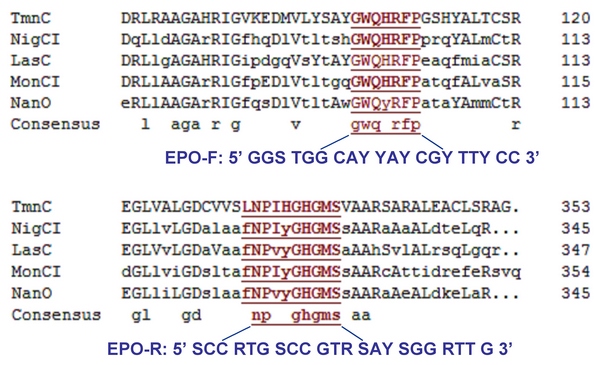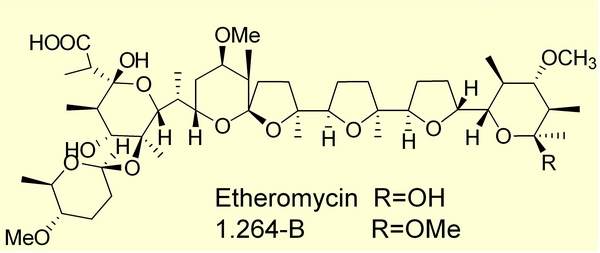
Privacy statement: Your privacy is very important to Us. Our company promises not to disclose your personal information to any external company with out your explicit permission.
Polyether ionophores are a class of unique polyketide compounds with broad-spectrum biological activity. They have great potential for development of resistance to drug-resistant bacteria, parasites, and tumors. The currently known polyether ionophores are produced by actinomycetes without exception, so actinomycetes are an important source of such active substances and ideal materials for biosynthesis research.
Huang Ying's research group of the State Key Laboratory of Early Development of Microbial Resources, Institute of Microbiology, Chinese Academy of Sciences compared the known polyether ionophore biosynthesis gene clusters and found that they all contain a key post-modification enzyme gene-cyclooxygenase Gene (epo), which is responsible for the epoxidation of unsaturated polyether intermediates in the synthetic pathway. The research team designed specific primers for the gene, and PCR-screened more than 1,000 strains of actinomycetes from different habitats and different genera. The results showed that only 4 genera of actinomycetes have the potential to produce polyether antibiotics. Streptomyces acidophilus from acid soil has the most potential, and the designed primers are also suitable for detecting the cyclooxygenase gene of many polyether ionophore-producing bacteria with unknown gene clusters. Subsequently, product analysis was performed on 13 positive strains, and it was confirmed that they all produced polyether antibiotics, and there was a clear correlation between the cyclooxygenase gene sequence and the structure of the polyether product, and two new structural analogs were obtained. Thus, a gene screening strategy for quickly identifying known polyethers and discovering unknown polyethers from actinomycetes was established.
This research provides a typical example of the discovery of new natural products based on the screening of modified enzyme genes after secondary metabolic biosynthesis, which is of guiding significance for the exploration and utilization of microbial resources.
The results of the study were published in Applied and Environmental Microbiology in May. The research was supported by the National Natural Science Foundation of China (30770002) and the National "863" project (2007AA09Z420).

Cyclooxygenase gene specific primer

Polyether antibiotic etheromycin and its new structural analogues
July 18, 2023
July 03, 2023
October 14, 2024
July 03, 2023
December 06, 2023
October 25, 2023
Email ke pemasok ini
July 18, 2023
July 03, 2023
October 14, 2024
July 03, 2023
December 06, 2023
October 25, 2023

Privacy statement: Your privacy is very important to Us. Our company promises not to disclose your personal information to any external company with out your explicit permission.

Fill in more information so that we can get in touch with you faster
Privacy statement: Your privacy is very important to Us. Our company promises not to disclose your personal information to any external company with out your explicit permission.